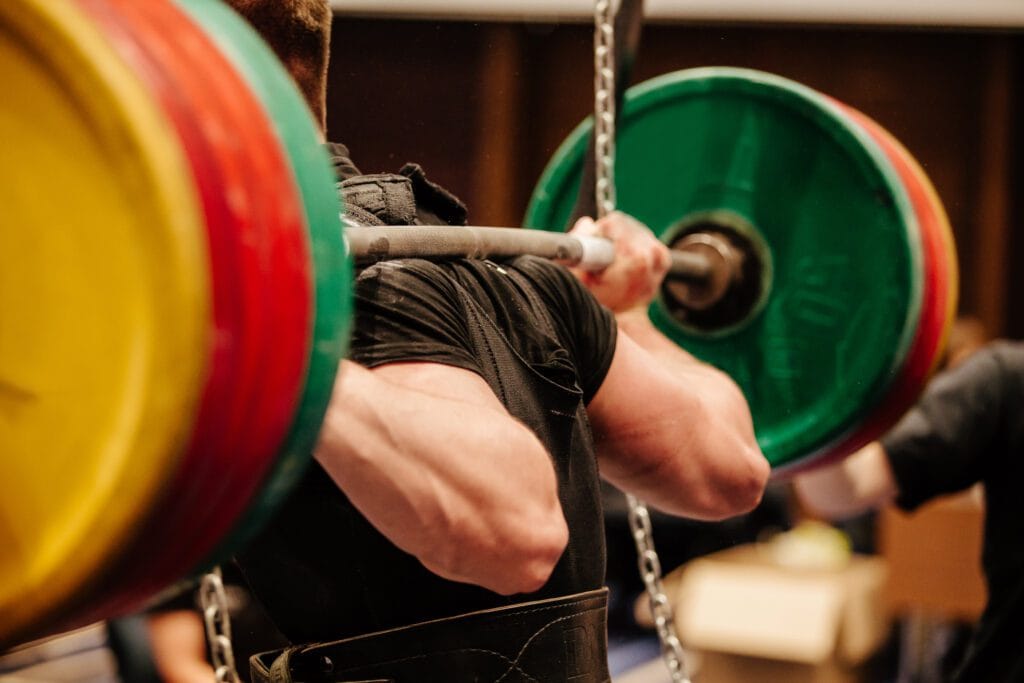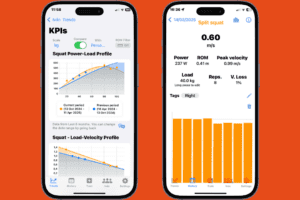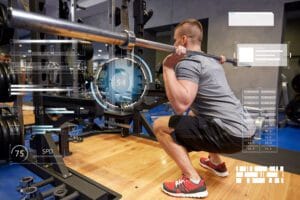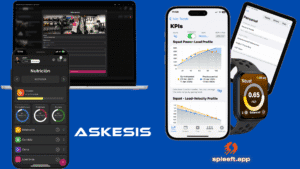You’ve been grinding in the gym for weeks, maybe months, religiously showing up and putting in the work. You pick things up and you put them down, just like the meme says, but lately, those numbers on the barbell aren’t budging. Sound familiar? If you’re staring at the same weight week after week, wondering why you can’t seem to lift heavier weights, you’re definitely not alone. This plateau phenomenon affects everyone from weekend warriors to seasoned lifters, and it’s one of the most frustrating experiences in strength training. The good news? There’s actual science behind why this happens, and even better strategies to break through these stubborn barriers.
DOWNLOAD SPLEEFT APP NOW FOR iOS, ANDROID AND APPLE WATCH!
The Science Behind Strength Plateaus
Understanding Progressive Overload and Its Limitations
When you first started lifting heavy weights, your body responded like a sponge soaking up water. Every session seemed to yield gains, and adding weight to the bar felt almost automatic. But here’s the thing about progressive overload – it’s not just about slapping more plates on the barbell indefinitely. Progressive overload is fundamentally about increasing neuromuscular demand to facilitate further adaptations, but the traditional approach of simply increasing load isn’t the only path forward1.
Research reveals that there are multiple ways to achieve progressive overload beyond just adding weight. You can increase the number of repetitions, modify the velocity of execution, adjust the range of motion, manipulate rest intervals, or change weekly frequency6. This broader understanding of progression opens up entirely new avenues for those stuck wondering how to lift heavier weights when the traditional “add five pounds” method stops working.
The plateau effect in training represents a significant obstacle that affects both professional athletes and recreational lifters. This phenomenon evolves from complex interactions within the muscle-nerve-axis and various cardiorespiratory adaptations2. When your body becomes too familiar with a specific training stimulus, it essentially becomes efficient at managing that stress without needing to adapt further. It’s like your muscles have learned to coast rather than grow.
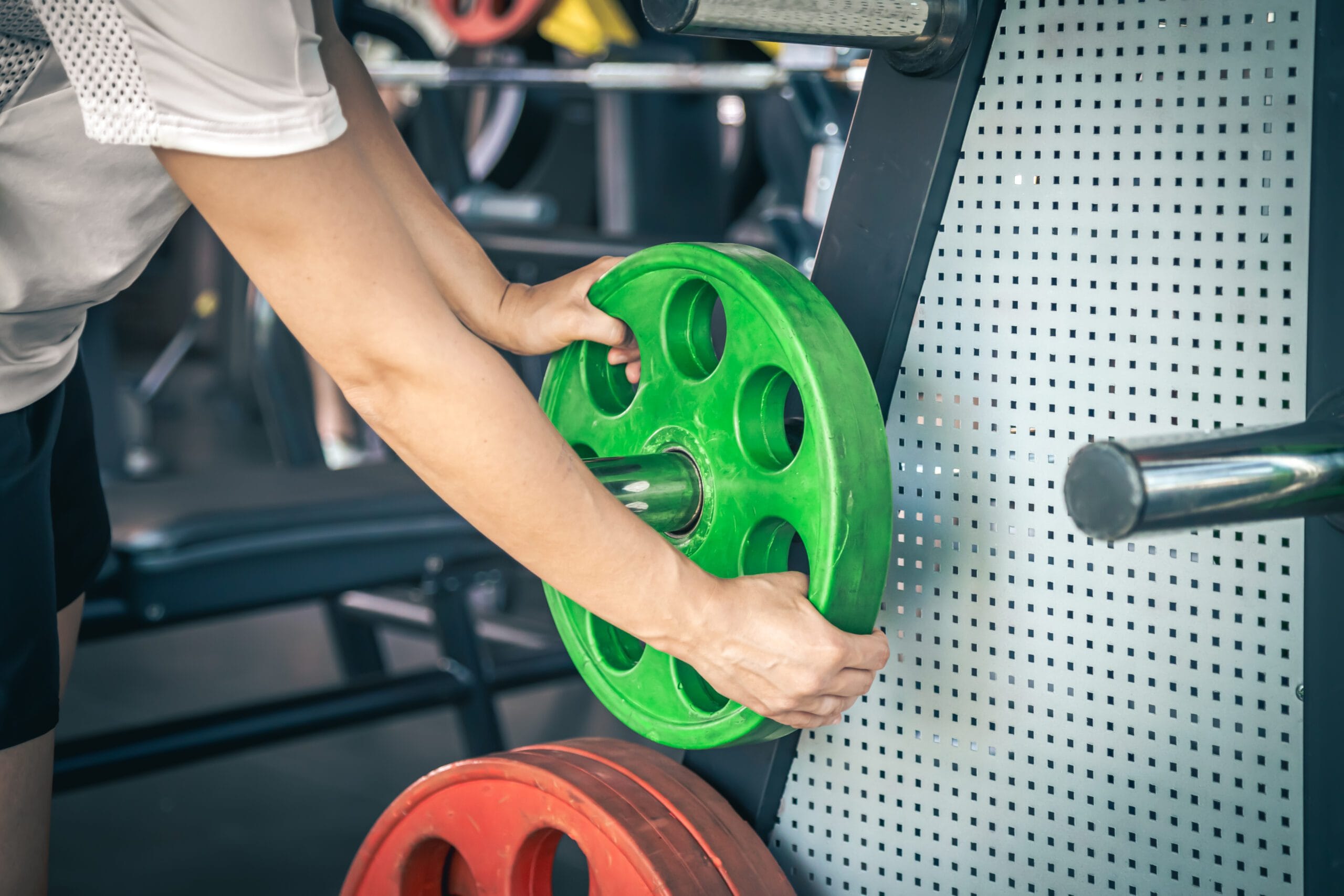
The Role of Adaptation and Diminishing Returns
Your body is remarkably intelligent at adapting to stress, but this intelligence can work against you when trying to lift bigger weights. The initial rapid gains you experienced were largely due to neural adaptations – your brain getting better at recruiting muscle fibers and coordinating movement patterns. However, as these neural improvements plateau, further strength gains require actual structural changes in muscle tissue, which occur much more slowly.
Studies examining the time course of resistance training adaptations show that while neural improvements can happen within weeks, significant muscle strength improvements follow a more gradual timeline. Research on older adults demonstrated statistically significant strength improvements every four weeks during a 16-week resistance training program, with increases of 7.3 ± 4.9 kg in some measures after the full duration4. This data illustrates that meaningful strength gains operate on longer timescales than many lifters expect.
Common Culprits Behind Stalling Heavy Lifts
The Sticking Point Phenomenon
One of the most immediate reasons people struggle to lift heavier weights lies in the concept of sticking points. These are specific positions within a lift where the movement becomes disproportionately difficult, often leading to failed attempts. The sticking point is usually where failure occurs and is associated with an increased chance of exercise form deterioration or breakdown7.
Understanding sticking points is crucial for anyone serious about lifting heavy weights. These aren’t random occurrences but predictable biomechanical challenges that occur at specific joint angles where leverage is poorest or muscle activation is suboptimal. For example, in the bench press, many lifters hit their sticking point just off the chest, while in the squat, it often occurs in the bottom position or during the transition from descent to ascent.
Different training strategies can specifically target these weak points. Accommodating resistance, pause reps, and partial range-of-motion training all serve as tools to address sticking points systematically. When you can’t lift more weight through the full range of motion, working on these specific weak points often unlocks the ability to handle heavier loads overall.
Programming and Periodization Issues
Many lifters approaching the question “how to lift heavy weights” fall into the trap of linear thinking. They assume that if lifting heavy weights three times per week was good, then lifting heavier weight five times per week must be better. This approach ignores the fundamental principles of periodization and recovery.
Periodization represents a concept of systematic progression, involving resistance training programs that follow predictable patterns of change in training variables8. Rather than constantly pushing maximum loads, effective periodization involves strategic phases of different training intensities and volumes. This approach prevents overtraining while systematically building the various qualities needed for heavy lifting.
The research on minimal dose strategies provides interesting insights here. Studies show that even “Weekend Warrior” approaches, where resistance exercise is performed in one weekly session, can produce meaningful strength gains3. This doesn’t mean you should only train once per week, but it highlights that more isn’t always better when it comes to heavy lifting frequency.
Recovery and Overtraining Syndrome
Perhaps the most overlooked aspect of lifting heavier weights is the recovery component. While exercise triggers muscle adaptations, the post-exercise recovery period is equally critical for allowing metabolic and structural adaptations to occur within skeletal muscle10. The cyclical periods between exhausting exercise and recovery form the foundation of any effective training prescription.
When there’s an imbalance between training-induced fatigue and inadequate recovery periods, performance declines. Research examining recovery following different resistance exercise protocols shows that recovery timelines vary significantly based on loading magnitude and velocity loss during sets11. Protocols involving higher intensities and greater velocity loss require longer recovery periods before subsequent high-quality training can occur.
Overtraining syndrome (OTS) represents the extreme end of this recovery-training imbalance. OTS is defined by persistent underperformance despite more than two months of recovery, combined with mood changes and absence of other identifiable causes10. While most recreational lifters won’t reach this extreme, subclinical overreaching is much more common and can explain why someone suddenly can’t lift weights they previously handled easily.
Advanced Strategies to Break Through Weight Plateaus
Complexity-Based Load Progression
Traditional progression models focus primarily on increasing external load, but emerging research suggests that complexity progression offers another powerful tool for continued advancement6. Instead of always asking “how can I lift more weight,” consider asking “how can I make this movement more challenging?”
Complexity progression might involve transitioning from bilateral to unilateral movements, adding unstable surfaces, incorporating pause reps, or combining multiple movement patterns. For example, progressing from a regular back squat to a pause squat, then to a single-leg squat, increases training complexity without necessarily requiring heavier weight. This approach is particularly valuable for advanced lifters who have exhausted linear load progression options.
The beauty of complexity progression lies in its ability to provide novel training stimuli that force continued adaptation. When your body has become efficient at handling a specific load and movement pattern, introducing complexity variables disrupts this efficiency and requires new adaptive responses.
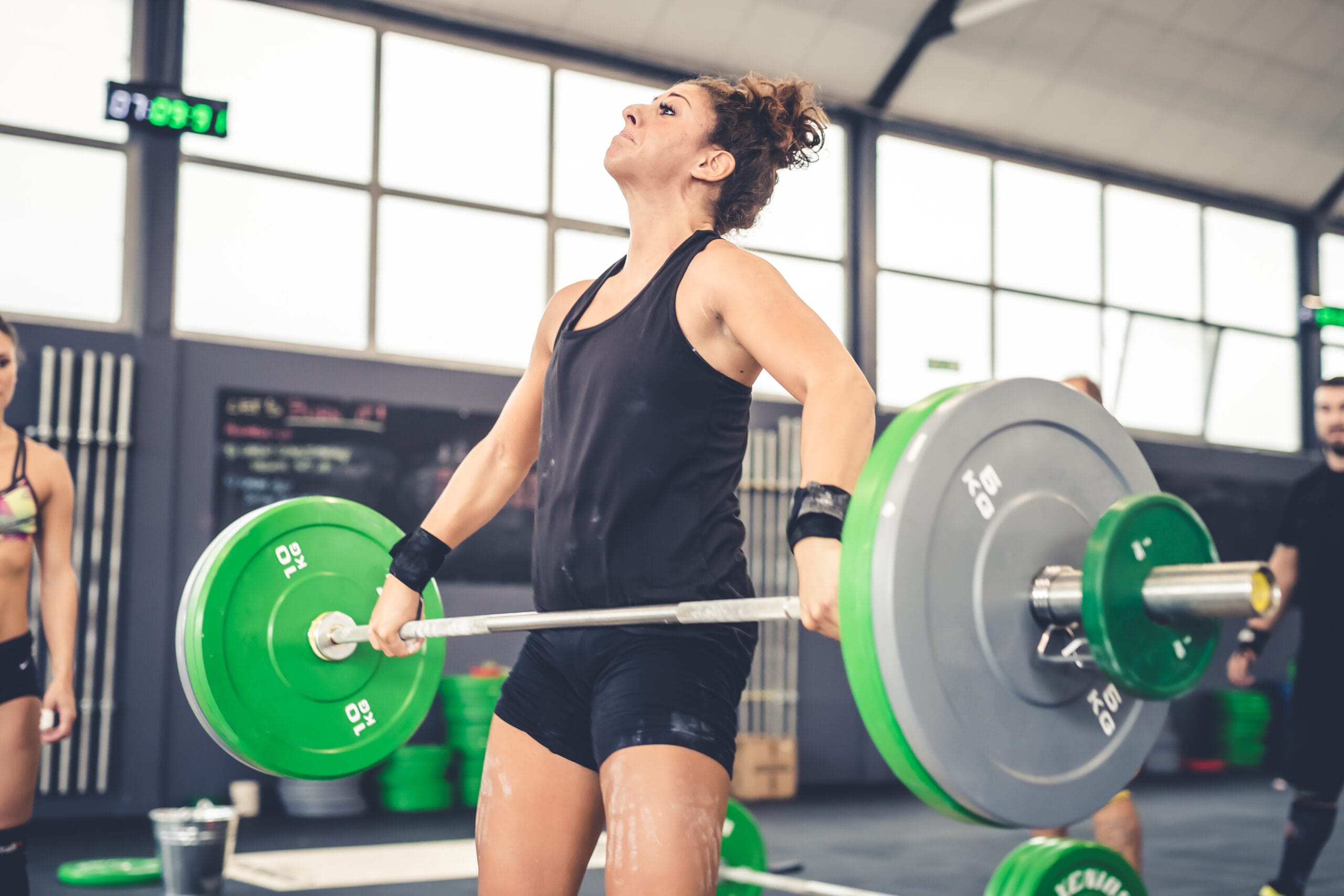
Velocity-Based Training and Auto-Regulation
Modern strength training increasingly incorporates velocity-based training (VBT) as a tool for optimizing load selection and managing fatigue. Rather than rigidly following predetermined percentages, VBT allows for real-time adjustment based on performance quality. This approach is particularly valuable when trying to lift heavy weights consistently while managing fatigue accumulation.
Research examining velocity loss as a training variable shows that different velocity loss thresholds produce distinct fatigue and recovery profiles11. Training to a 20% velocity loss produces less fatigue and faster recovery compared to training to a 40% velocity loss, regardless of the absolute load used. This information allows for more precise training prescription based on current readiness and recovery status.
Auto-regulation takes this concept further by adjusting training variables based on daily performance indicators. Instead of forcing yourself to attempt a specific weight regardless of how you feel, auto-regulation allows for load adjustments based on factors like bar velocity, rate of perceived exertion, or even simple readiness questionnaires.
Addressing Individual Sticking Points
Since sticking points represent such a common limitation in heavy lifting, developing strategies to address them systematically can unlock significant strength gains. The key is identifying where your individual sticking points occur and then implementing specific training methods to address those weaknesses.
For sticking points that occur early in the range of motion, techniques like pause reps, dead stops, or pin presses can be highly effective. These methods force you to generate force from a mechanically disadvantaged position, strengthening the exact ranges where you typically struggle. For sticking points that occur later in the range of motion, accommodating resistance methods using bands or chains can provide progressive overload through the sticking region.
Partial range-of-motion training also serves as a valuable tool for addressing sticking points. By working in shortened ranges around your weak points with heavier loads, you can develop strength and confidence in those specific positions. This approach should complement, not replace, full range-of-motion training.
The Role of Technology in Modern Strength Training
How Spleeft App Revolutionizes Heavy Lifting
In today’s digital age, successful strength training increasingly relies on data-driven approaches and intelligent programming. This is where Spleeft App becomes invaluable for lifters serious about breaking through weight plateaus. Rather than guessing at optimal loads or following generic programs, Spleeft App provides personalized training recommendations based on your individual performance data.
The app’s sophisticated algorithms take into account factors like training history, and current performance levels to suggest optimal loads and volumes for each session. This approach eliminates much of the guesswork involved in deciding how to lift heavier weights while managing fatigue appropriately. Instead of wondering whether you should attempt that new personal record today, the app provides data-driven guidance based on your readiness indicators.
Spleeft App also excels at implementing periodization principles automatically. Rather than requiring extensive knowledge of complex periodization models, the app manages the systematic variation of training variables to ensure continued progress while preventing overtraining. This automated periodization is particularly valuable for lifters who understand the importance of systematic progression but lack the expertise to design optimal programs themselves.
Integration with Modern Training Methods
Spleeft App seamlessly integrates many of the advanced training concepts discussed in this article. Velocity-based training principles are built into the app’s recommendations, allowing for real-time adjustments based on performance quality. The app can suggest when to push harder and when to back off based on velocity data and other performance indicators.
Auto-regulation becomes effortless with Spleeft App’s daily readiness assessments. Instead of rigidly following predetermined workouts regardless of how you feel, the app adjusts recommendations based on your current state. This approach optimizes the balance between training stress and recovery, ensuring that each session contributes to long-term progress rather than just accumulating fatigue.
Practical Implementation Strategies
Weekly Programming Considerations
When designing a program to lift heavier weights consistently, weekly structure becomes critically important. Research on training frequency shows that strength gains can be achieved with various frequencies, from once-weekly “Weekend Warrior” sessions to daily training3. The key is matching frequency to recovery capacity and training goals.
For most lifters struggling to increase their heavy lifts, a frequency of 2-3 sessions per week per movement pattern provides optimal balance between stimulus and recovery. This allows sufficient practice of movement patterns while providing adequate recovery time between sessions. However, the specific frequency that works best varies based on training experience, age, recovery capacity, and other lifestyle factors.
Volume distribution throughout the week also matters significantly. Rather than cramming all your heavy lifting into one brutal session, distributing volume across multiple sessions typically produces better results and lower injury risk. This approach allows for higher quality work in each session and better management of fatigue accumulation.
Progressive Loading Strategies
The traditional approach of adding five pounds every week works beautifully for beginners but becomes impractical as you advance. Advanced lifters need more sophisticated progression models that account for the nonlinear nature of strength development.
Double progression represents one effective alternative, where you progress repetitions before progressing load. For example, instead of immediately adding weight when you complete your target sets and reps, you might add repetitions first. Once you can perform additional reps above your target, then you increase the load and drop back to baseline repetitions.
Wave loading offers another sophisticated approach, involving cyclical increases and decreases in training loads within and between sessions. This method allows for exposure to heavier weights while managing fatigue accumulation more effectively than linear progression models.
The following table illustrates different progression strategies and their applications:
| Progression Strategy | Best For | Example |
|---|---|---|
| Linear | Beginners | Add 5lbs every week |
| Double Progression | Intermediate | Increase reps, then weight |
| Wave Loading | Advanced | Cyclical load variations |
| Complexity Progression | All levels | Add movement complexity |
| Auto-Regulation | Experienced | Daily load adjustments |
Nutrition and Recovery Considerations
Fueling Heavy Lifting Performance
Your ability to lift heavier weights isn’t determined solely by what happens in the gym. Nutrition plays a fundamental role in supporting the energy demands of heavy lifting and facilitating recovery between sessions. Adequate protein intake supports muscle protein synthesis, while sufficient carbohydrates fuel high-intensity training sessions.
Timing of nutrition also matters for heavy lifting performance. Pre-workout nutrition should focus on providing readily available energy without causing digestive distress. Post-workout nutrition should prioritize replenishing glycogen stores and providing amino acids for muscle protein synthesis.
Hydration status significantly impacts strength performance, with even mild dehydration reducing force production capacity. For lifters serious about lifting heavy weights consistently, maintaining optimal hydration throughout the day becomes a non-negotiable aspect of performance optimization.
Sleep and Recovery Optimization
Sleep quality and duration directly impact your ability to lift heavier weights. During sleep, important recovery processes occur, including growth hormone release, muscle protein synthesis, and nervous system recovery. Insufficient sleep duration or poor sleep quality can significantly impair strength performance and increase injury risk.
Most strength athletes require 7-9 hours of quality sleep per night for optimal recovery and performance. Sleep hygiene practices like maintaining consistent sleep schedules, optimizing bedroom environment, and avoiding screens before bedtime can significantly improve sleep quality.
Active recovery methods like light movement, massage, or stretching can support the recovery process without adding significant training stress. However, these methods should complement, not replace, adequate sleep and nutrition as primary recovery modalities.
Conclusion
Breaking through weight plateaus requires a multifaceted approach that goes far beyond simply trying to lift harder every session. Understanding the science behind strength development, implementing sophisticated programming strategies, and leveraging modern technology like Spleeft App can transform your approach to heavy lifting.
The key insight is that lifting heavier weights isn’t just about muscular strength – it’s about optimizing the entire system including programming, recovery, nutrition, and mental approach. When you stop asking “how can I lift more weight tomorrow” and start asking “how can I systematically build the capacity to lift heavier weights over time,” everything changes.
Whether you’re stuck on a particular lift or experiencing a general plateau across all your heavy lifting, remember that plateaus are temporary obstacles, not permanent limitations. With the right strategies, adequate patience, and consistent application of evidence-based principles, you can break through these barriers and reach new levels of strength performance.
Spleeft App serves as your intelligent training partner in this journey, providing the data-driven insights and personalized recommendations needed to navigate the complex landscape of advanced strength training. Instead of guessing at optimal loads or following generic programs, you can leverage sophisticated algorithms and evidence-based programming to ensure every session contributes to your long-term goal of lifting heavier weights.
References
1 Plotkin, D., Coleman, M., Van Every, D., Maldonado, J., Oberlin, D., Israetel, M., … & Schoenfeld, B. J. (2022). Progressive overload without progressing load? The effects of load or repetition progression on muscular adaptations. PeerJ, 10, e14142.
2 Belvirda, V., Rago, V., Barreira, D., Krustrup, P., Nevill, A., & Rebelo, A. (2022). A Subject-Tailored Variability-Based Platform for Overcoming the Plateau Effect in Sports Training: A Narrative Review. Sports Medicine – Open, 8(1), 1-18.
3 Refalo, M. C., Hamilton, D. L., Paslakis, G., Kohl, M., Kaminsky, L. A., & Sheppard, J. M. (2024). Resistance Exercise Minimal Dose Strategies for Increasing Muscle Strength in the General Population: an Overview. Sports Medicine, 54(3), 733-762.
4 Radaelli, R., Taaffe, D. R., Newton, R. U., Galvão, D. A., & Miler, M. K. (2015). The time course of changes induced by resistance training and detraining on muscular and physical function in older adults. European Journal of Applied Physiology, 115(12), 2285-2294.
5 Saraceni, N., Kent, P., Ng, L., Campbell, A., Straker, L., & O’Sullivan, P. (2022). Lifting Techniques: Why Are We Not Using Evidence To Optimize Movement? Physical Therapy, 102(1), pzab226.
6 Coratella, G., Chemello, A., & Schena, F. (2019). Complexity: A Novel Load Progression Strategy in Strength Training. Frontiers in Physiology, 10, 839.
7 Van den Tillaar, R., Ettema, G., & Saeterbakken, A. H. (2016). Understanding and Overcoming the Sticking Point in Resistance Exercise. Sports Medicine, 46(11), 1663-1672.
8 Fleck, S. J. (2010). Periodization. Strength and Conditioning Journal, 32(4), 91-92.
9 Rønnestad, B. R., Hansen, J., Vegge, G., & Mujika, I. (2014). Effects of a Seven Day Overload-Period of High-Intensity Training on Performance and Physiology of Competitive Cyclists. PLoS One, 9(12), e115308.
10 Schoenfeld, B. J., Grgic, J., & Krieger, J. (2020). Intramuscular mechanisms of overtraining. European Journal of Sport Science, 20(5), 621-633.
11 Pareja-Blanco, F., Rodríguez-Rosell, D., Sánchez-Medina, L., Ribas-Serna, J., López-López, C., Mora-Custodio, R., … & González-Badillo, J. J. (2019). Time Course of Recovery Following Resistance Exercise with Different Loading Magnitudes and Velocity Loss in the Set. Sports, 7(3), 59.

Iván de Lucas Rogero
MSC Physical Performance & CEO SpleeftApp
Dedicated to improving athletic performance and cycling training, combining science and technology to drive results.

